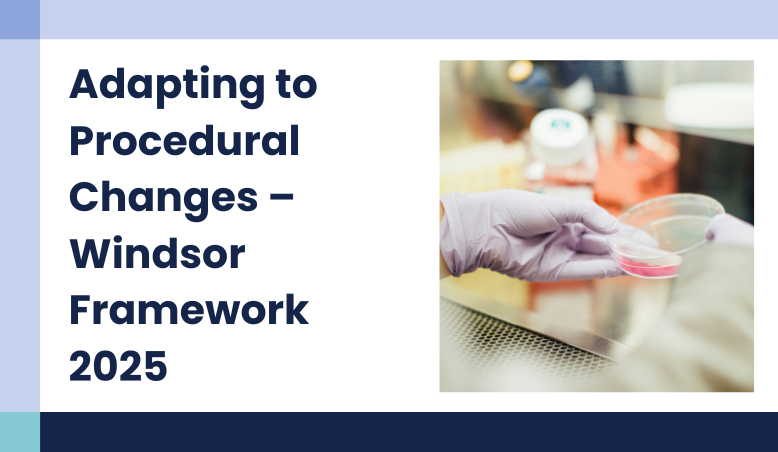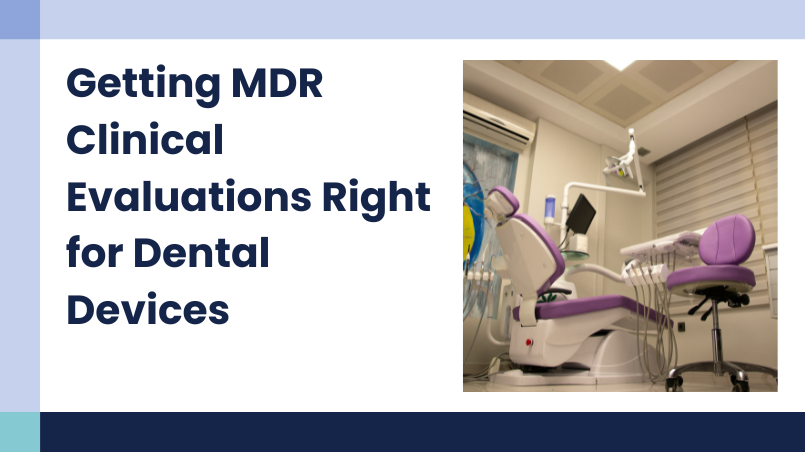EUDAMED Becomes Fully Mandatory from 28 May 2026: What Medical Device & IVD Manufacturers Need to Know
Adverse Event Reporting for Medical Devices: Global Regulations, Timelines, and Compliance Insights
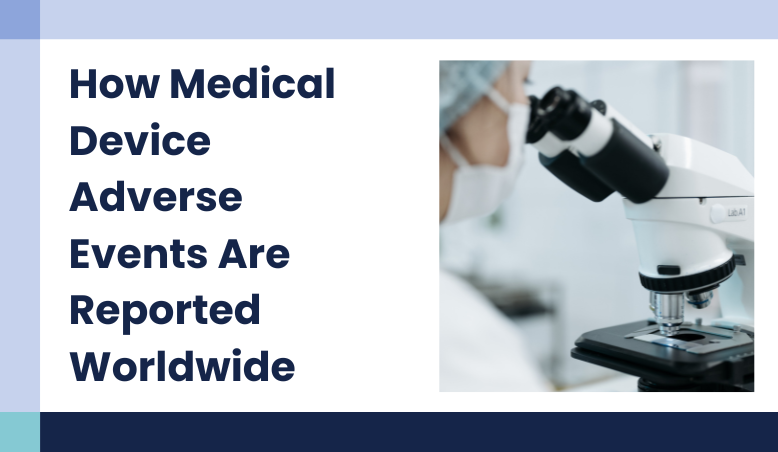
09 Jun, 2025
What is Adverse Event Reporting (AER)?
The process of Adverse Event Reporting (AER) involves the systematic recording and submission of information about adverse events that occur during the use of medical products (drugs, devices and vaccines) Such reports contribute significantly to the surveillance of product safety by regulatory agencies, allowing for prompt action when needed to ensure public health and safety.
Importance of Reporting in Medical Devices
Adverse events are any unexpected, harmful or untoward medical occurrence related to the use of the medical product in humans not necessarily caused by the product. Reporting of adverse events in medical devices is a critical part of post-market surveillance aimed at ensuring the continued safety and performance of medical devices after their use. This includes the identification, documentation and reporting of incidents in which the device may have caused or contributed to injury, death or malfunction. Adverse events can be reported by manufacturers, importers, distributors, healthcare providers and patients/consumers.
Reporting Requirements and Key Information
Reporting requirements for adverse events (AEs) vary according to jurisdiction, type of organisation and severity of the event. Serious incidents causing death, serious injury or deterioration of health; requiring medical or surgical intervention or causing permanent impairment should be reported. A recurring device malfunction which has the potential to cause serious harm should be reported. The regulatory authorities usually require information related to reporter, device, date of occurrence, description of the events, outcome and severity. If the reporter is a manufacturer, details related to corrective and preventive actions, recalls, field safety corrective actions, if any are also required. when a medical device adverse event report is submitted. The objective is to present a comprehensive and unambiguous image of the event, device, and patient outcome.
Global Regulatory Frameworks and Reporting Systems
Every nation has set up a different regulatory framework with distinct reporting procedures, specifications, and deadlines for tracking and handling incidents involving medical devices. Manufacturers, medical professionals, and regulatory affairs specialists working in a global market must comprehend these distinctions.
United States – FDA
The Food and Drug Administration (FDA) is in charge of regulating medical devices in the US. The Manufacturer and User Facility Device Experience (MAUDE) database and the MedWatch application are the main reporting platforms. Adverse events must be reported by manufacturers, importers, and device user facilities in accordance with the Medical Device Reporting (MDR) regulation (21 CFR Part 803). The eMDR system must be used to electronically submit reports. The FDA mandates that events requiring immediate corrective action be reported within five workdays, and that serious injuries or deaths be reported within thirty calendar days. The FDA can respond promptly to safety communications and recalls thanks to this strong system. The TPLC and MAUDE database searches are integrated in CAPTIS® platform of Celegence. It enables the medical writers to seamlessly conduct database searches and analysis of the search results to obtain quality outcomes.
European Union – EUDAMED
The Medical Device Regulation (EU) 2017/745, which requires the reporting of serious incidents and field safety corrective actions, governs medical devices in the European Union. EUDAMED (European Database on Medical Devices) is the EU’s central database for medical device vigilance. Incidents must be reported by importers, manufacturers, and authorized representatives; patients and healthcare providers may voluntarily report through the appropriate national authorities. The deadlines are strict: death or a major decline in health must be reported within two days, major public health threats must be reported right away, and other serious incidents must be reported within ten to fifteen days.
United Kingdom – MHRA
The Medicines and Healthcare Products Regulatory Agency (MHRA) was the regulatory pathway that the United Kingdom established. Systems like the Manufacturer’s Online Reporting Environment (MORE) and the Yellow Card Scheme are still used in the UK to report adverse events. Within a certain amount of time—two days for public health threats, ten days for fatalities or serious injuries, and fifteen days for other reportable incidents—manufacturers and their UK Responsible Persons are required to report serious incidents.
Canada – Health Canada
Health Canada is in charge of medical device safety in Canada through the Medical Device Problem Report system and the Canada Vigilance Program. According to the law, distributors, importers, and manufacturers must report unfavorable incidents. Timelines for reporting incidents are set at 30 days for other incidents and 10 days for events that pose a serious risk. Reports may be submitted via specified forms or electronically.
Australia – TGA
The Incident Reporting and Investigation Scheme (IRIS) is run by the Therapeutic Goods Administration (TGA), Australia’s regulatory body. According to Australian laws, healthcare providers may choose to report adverse events voluntarily, but sponsors—including importers and manufacturers—must report them. According to severity, the reporting deadlines are tier-based: two days for major public health threats, ten days for major injuries or fatalities, and thirty days for less important incidents.
Japan – MHLW and PMDA
Medical device vigilance in Japan is a joint responsibility of the Ministry of Health, Labor, and Welfare (MHLW) and the Pharmaceuticals and Medical Devices Agency (PMDA). Marketing authorization holders can report more easily thanks to the J-MEDWATCH system. If an adverse event is considered serious, it must be reported within 15 days; for less serious incidents, reporting must be done on a regular basis. The highly structured regulatory environment in Japan places a strong emphasis on traceability and documentation.
China – NMPA
Adverse event reporting in China is regulated by the National Medical Products Administration (NMPA) via a national electronic monitoring system. Manufacturers, holders of marketing authorizations, and healthcare facilities are required to report. For other kinds of incidents, regular safety updates are necessary, and serious adverse events must be reported within 15 days. In recent years, China’s regulatory framework has undergone significant modernization, bringing it closer to international norms.
India – CDSCO
The Materiovigilance Programme of India (MvPI) is run by the Central Drugs Standard Control Organization (CDSCO), India’s regulatory body, to keep an eye on adverse events linked to medical devices. While hospitals and medical professionals voluntarily participate through Adverse Drug Reaction Monitoring Centers (AMCs), manufacturers and importers are obligated to report incidents. India strives to conform to international reporting standards, despite the fact that timelines are not as clearly stated as in other nations.
Global Challenges in Adverse Event Reporting
A crucial but difficult part of international health systems is the reporting of adverse events for medical devices. A number of factors, including underreporting, inconsistent regulatory frameworks, divided responsibilities, technological constraints, and cultural considerations, contribute to the complexity. A diversified strategy is needed to address these issues, including coordinating global standards, making investments in digital infrastructure, encouraging a transparent and safe culture, and utilizing advanced analytics to improve signal detection.
The Role of Technology in Adverse Event Management
The application of advanced technologies, such as Artificial Intelligence (AI) and Machine Learning, is being investigated for their potential to augment signal identification and pattern recognition within extensive AE (Adverse Event) databases. Furthermore, the fusion of AE documentation with Electronic Health Records (EHRs) can automate data acquisition, alleviate the workload of clinicians, and enhance the precision of the data.
Toward Safer and More Reliable Medical Devices
In conclusion, medical device adverse event reporting is essential to patient safety and preserving the integrity of healthcare systems. It facilitates prompt regulatory actions and ongoing product development by gathering real-world data on device performance and related risks. Its efficacy is hampered by issues like underreporting, disjointed regulatory frameworks, and poor technological integration. In order to get past these obstacles, manufacturers, medical professionals, regulators, and patients must work together. Post-market surveillance will be strengthened and everyone will eventually have access to safer and more dependable medical devices thanks to the development of digital reporting systems, the standardization of international standards, and the promotion of an open culture.
Contact us today at info@celegence.com to learn how we can help your team with global adverse event reporting and strengthen your medical device compliance strategy.
Other Related Articles

20 Nov, 2025

11 Nov, 2025
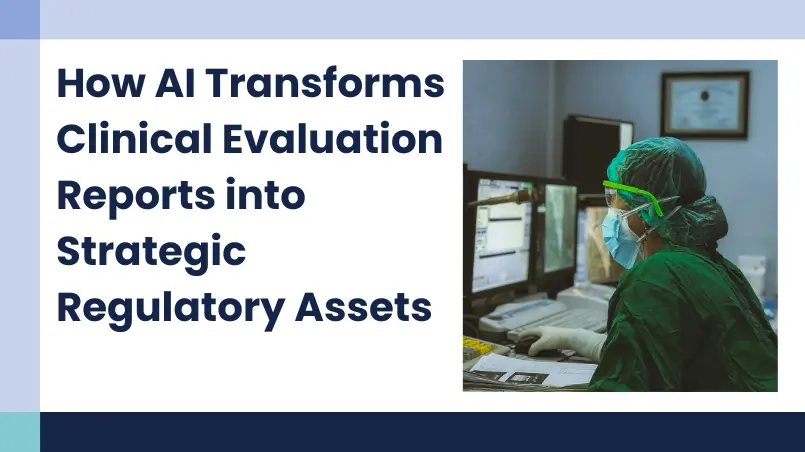
03 Oct, 2025

19 Sep, 2025
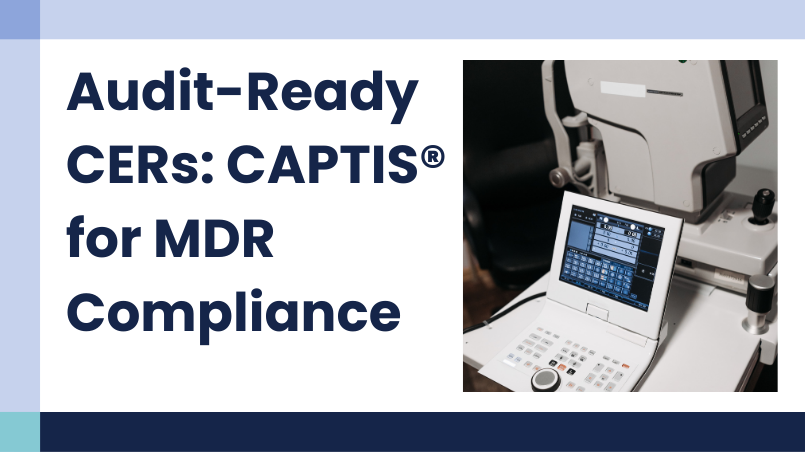
01 Sep, 2025

